

Japan’s lifestyle is a rich blend of tradition and modernity, where harmony, respect, and attention to detail shape daily life. From home customs like removing shoes at the genkan to enjoying seasonal cuisine, and from kimono-inspired fashion to public etiquette on trains, every aspect reflects deep cultural values.
Visitors can also experience these traditions abroad through workshops, festivals, and authentic dining. Whether you’re preparing for a trip or seeking to connect with Japanese culture at home, this guide offers practical insights into customs, food, fashion, and etiquette – helping you appreciate Japan’s unique way of life on a deeper level.
Japanese Customs and Traditions
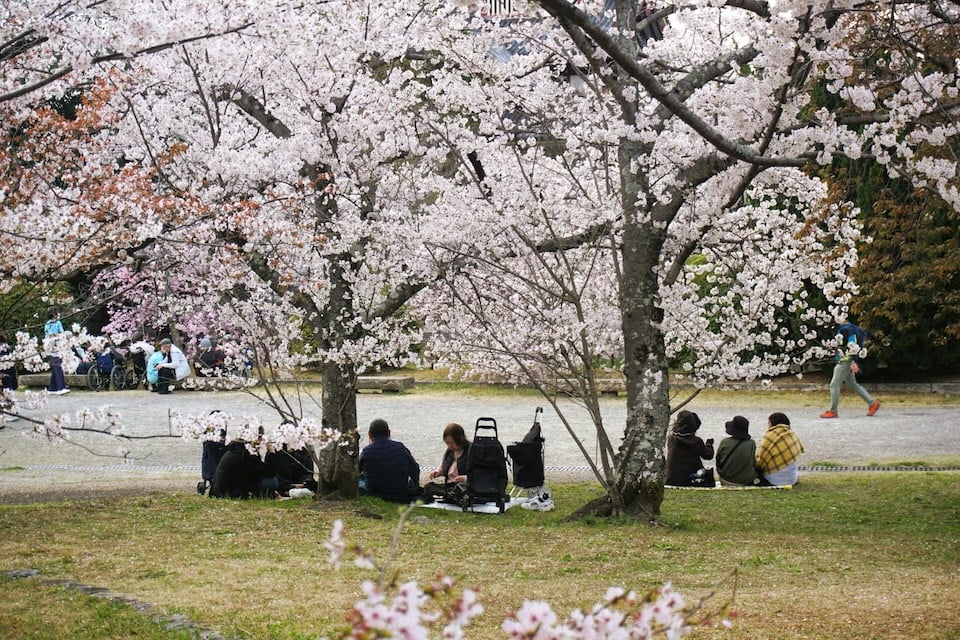
Japanese customs are rooted in respect and social harmony. Daily etiquette emphasizes courtesy—bowing when greeting, speaking politely, and removing shoes at home as a sign of cleanliness and respect. Punctuality is essential, as timeliness reflects consideration for others.
Seasonal festivals highlight the nation’s cultural rhythm: hanami (花見, hanami) picnics under cherry blossoms in spring, summer fireworks with yukata (浴衣, yukata), autumn moon-viewing and foliage, and Oshōgatsu (お正月, Oshōgatsu, New Year) with shrine visits and osechi cuisine. These events, celebrated nationwide, emphasize renewal and gratitude.
Underlying all is the concept of wa (和, wa, harmony)—seen in orderly queues, quiet public transport, and clean streets. Small acts, like offering seats or carrying trash until a bin is found, reflect a culture focused on not inconveniencing others. Together, these manners and traditions shape a society admired worldwide for its politeness and cooperation.

Japanese Lifestyle
Japan’s lifestyle is a blend of time-honored practices and modern living, with unique habits shaped by the environment and cultural values. From how homes are designed to work routines and leisure, the Japanese way of life balances tradition with innovation.
This harmony between past and present defines daily living in Japan, offering both cultural depth and modern convenience.
Home Life and Housing Styles

Japanese homes combine practicality with cultural etiquette. Entryways (genkan 玄関, genkan) mark the boundary between outside and inside, where shoes are removed and slippers worn. This simple act keeps floors clean in Japan’s humid climate and shows deep respect for the home, especially in tatami (畳, tatami) rooms where people sit or sleep.
Interiors are compact and flexible: futon (布団, futon) bedding is stored by day, sliding shōji (障子, shōji) doors create open spaces, and many homes still feature small altars or shrines. Thin walls encourage quiet living, and newcomers may greet neighbors with small gifts to foster harmony.
Technology reflects omotenashi (おもてなし, omotenashi). Rice cookers, kettles, and advanced toilets with bidets and heated seats are standard, while items like bathtub reheating systems or resealable packages highlight Japan’s focus on convenience and thoughtful design. Overall, home life beautifully blends tradition with modern comfort, emphasizing respect, cleanliness, and community.
Work-Life Balance and Daily Routines

Japan’s work culture is marked by long hours, sometimes leading to karōshi (過労死, karōshi). Reforms like limiting overtime and “Premium Friday” aim to improve balance. After work, coworkers often join nomikai (飲み会, nomikai) at izakaya (居酒屋, izakaya) pubs, though younger generations increasingly value personal time.
A daily ritual is bathing—soaking in hot tubs at home, sento (銭湯, sentō), or onsen (温泉, onsen), where etiquette requires washing first and bathing nude.
Daily life blends efficiency and mindfulness: simple breakfasts, bentō (弁当, bentō) lunches, quiet commuting, and evenings for family, hobbies, or study. Wellness and work-life balance are gaining importance even though long hours persist.
Public Behavior and Social Norms
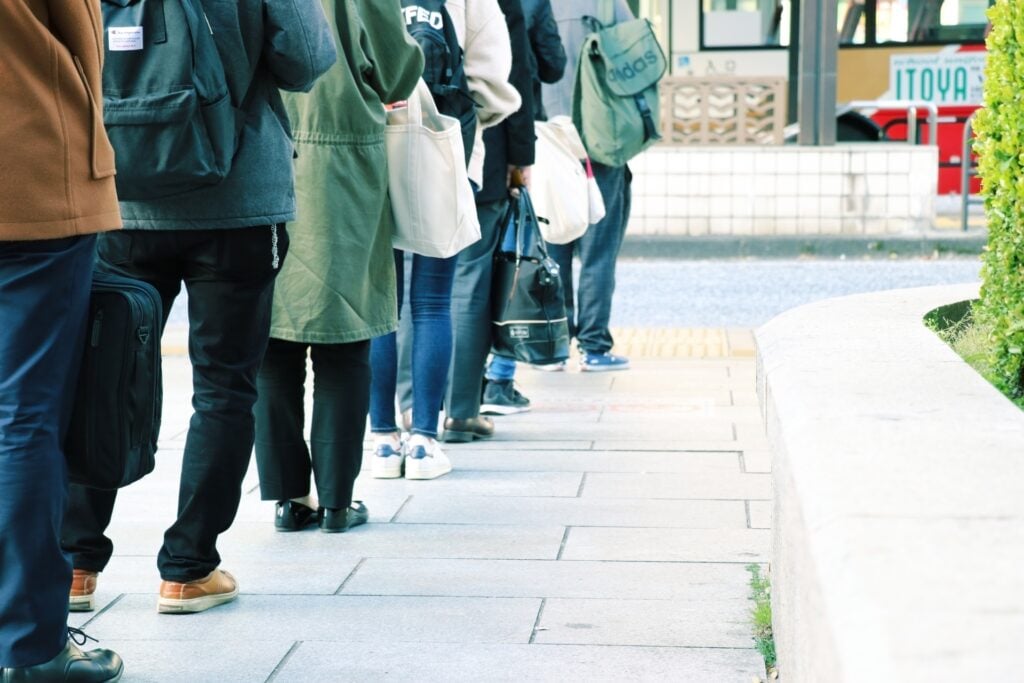
Public life in Japan is defined by courtesy, order, and cleanliness. On trains and buses, people speak quietly, keep phones on silent, and line up neatly to board. Courtesy extends to offering seats, holding backpacks low, and respecting priority seating.
Eating or smoking while walking is discouraged; instead, people finish food near stalls or use designated smoking areas. Queuing is a strong cultural habit, whether for trains or ramen shops, reflecting social trust.
Cleanliness is a national trait—despite few public bins, streets remain spotless as people carry trash home. Recycling is taken seriously, and “leave no trace” behavior is evident at festivals like hanami (花見, hanami).
The spirit of omotenashi (おもてなし, omotenashi) shapes service: staff bow, greet with irasshaimase!, and money is placed on trays rather than handed directly. Visitors often remark on Japan’s quiet, safe, and respectful atmosphere. Following these norms helps travelers blend in and experience Japan’s harmony firsthand.
Fusion of Traditional and Modern Fashion
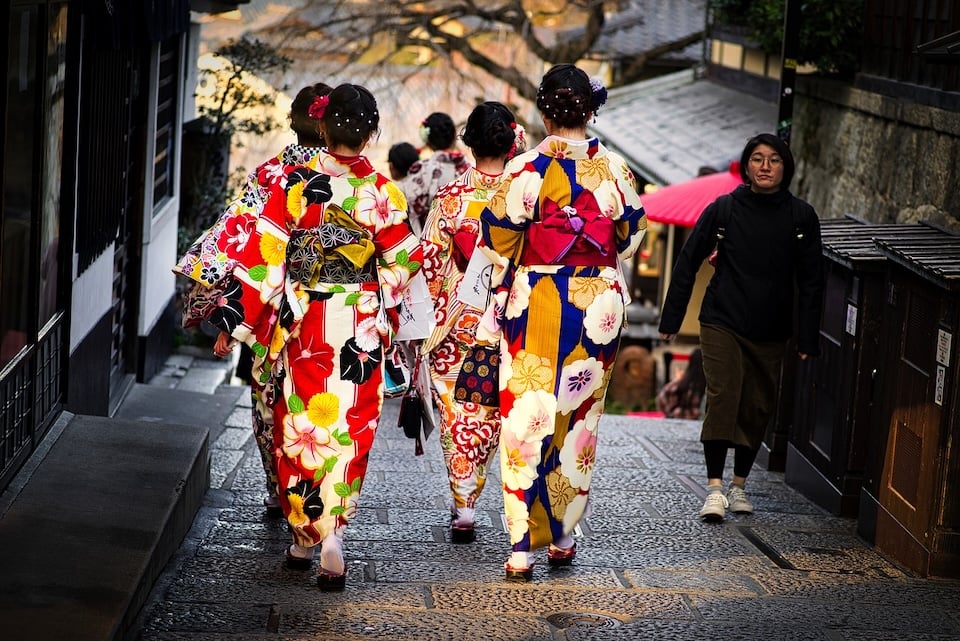
Japanese fashion thrives on blending tradition with modern style. Kimono (着物, kimono) still hold cultural prestige, yet designers reinvent them through kimono-inspired dresses, jackets, and obi-like (帯, obi) belts. Vintage fabrics are often reused, while youth in Tokyo and Kyoto mix kimono with sneakers or Western accessories, making tradition playful and accessible.
Prominent figures like YOSHIKI and avant-garde designers fuel this trend by pairing classic silhouettes with bold modern motifs. Subcultures such as Harajuku’s Wa-Lolita style and performances like the Takarazuka Revue showcase hybrid looks, while global celebrities also popularize kimono-style outfits, sometimes sparking cultural discussions.
The concept of wa-fuku meets yō-fuku (和服 meets 洋服, wafuku meets yōfuku) illustrates Japan’s long tradition of adaptation, from the Meiji era to today’s streetwear. Whether through geta (下駄, geta)-inspired sneakers or business suits with ukiyo-e (浮世絵, ukiyo-e) patterns, fashion in Japan continually reimagines heritage for a global stage.
Japanese Food
Japanese food, or washoku (和食, washoku), is renowned worldwide for its flavor, artistry, and healthfulness. From everyday meals to haute cuisine, Japan’s culinary culture reflects a balance of taste, beauty, and respect for ingredients.
In fact, traditional Japanese cuisine is considered such a treasure that UNESCO added Washoku to its Intangible Cultural Heritage list in 2013, recognizing its unique cultural significance.
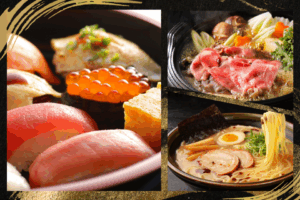
Everyday Meals and Dining Customs
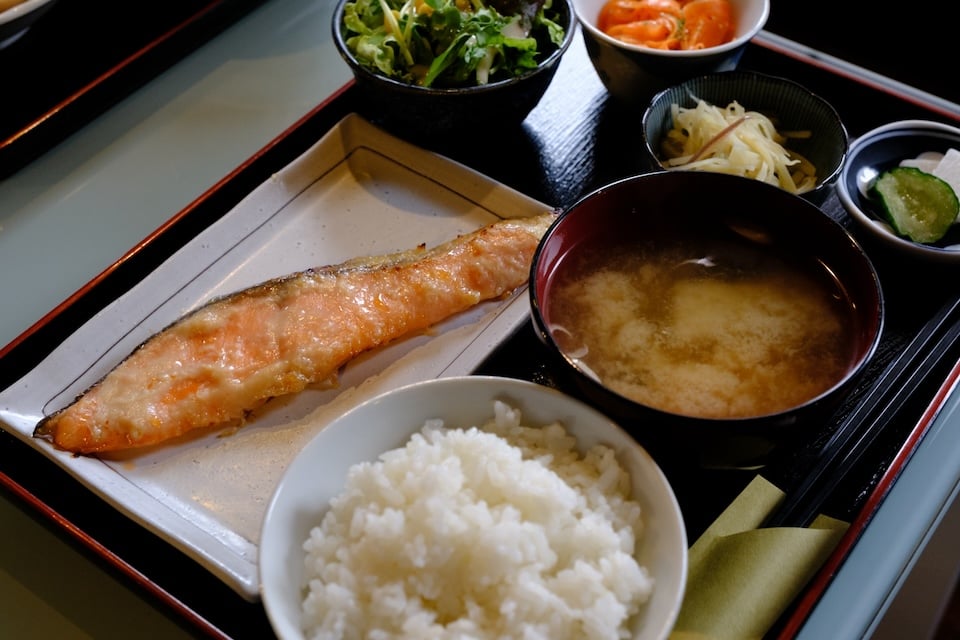
Japanese dining emphasizes balance, respect, and gratitude. A typical meal follows ichijū-sansai (一汁三菜, ichijū-sansai) with rice, soup, and side dishes. Wasting food is avoided, rooted in the concept of mottainai (もったいない, mottainai). Before eating, people say itadakimasu (いただきます), and after finishing, gochisōsama deshita (ごちそうさまでした) to show appreciation.
Chopstick etiquette is strict: never stick them upright in rice or pass food directly between chopsticks. Yet slurping noodles like ramen (ラーメン, rāmen) or udon (うどん, udon) is encouraged as a sign of enjoyment. Tipping is not practiced; good service is part of omotenashi (おもてなし, omotenashi).
Meals are often shared family-style, with kanpai! (乾杯, kanpai) before drinking. Even school lunches (給食, kyūshoku) teach respect for food, as children serve each other and clean up together—instilling lifelong habits of gratitude and mindfulness.
Iconic Japanese Dishes and Their Origins
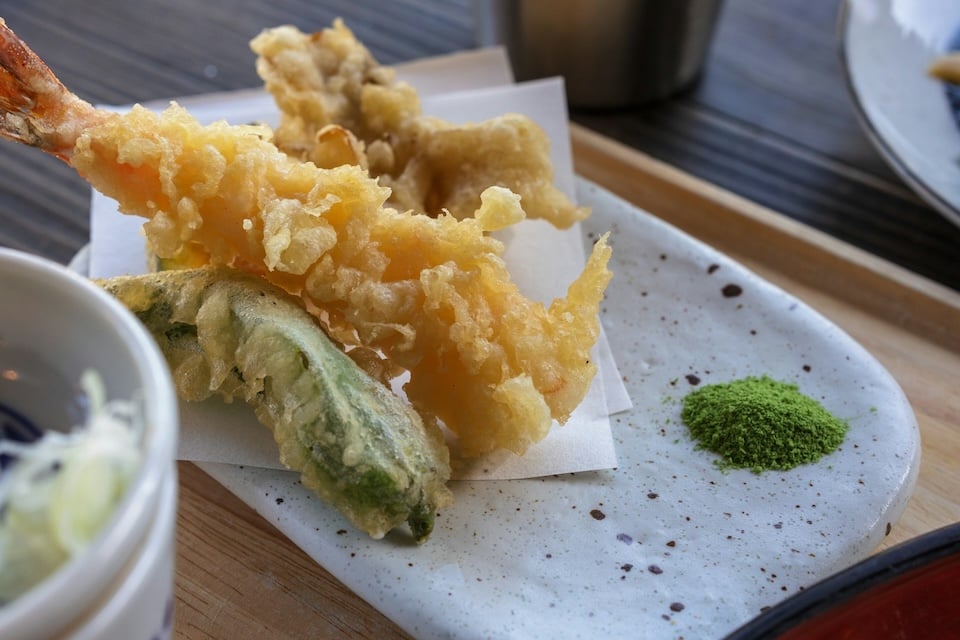
Japan’s signature foods blend tradition and global influence. Sushi, once a preservation method, became nigiri-zushi (握り寿司, nigiri-zushi) in Edo and is now fine dining. Tempura, introduced by Portuguese traders, was refined with lighter batter and seafood, evolving from street food to kaiseki art.
Ramen, adapted from Chinese noodles, spread nationwide after WWII shortages and later worldwide with Momofuku Ando’s instant version. Regional styles like Sapporo miso and Hakata tonkotsu highlight its diversity.
Raw traditions like sashimi (刺身, sashimi) and tamago kake gohan (卵かけご飯, tamago kake gohan) showcase Japan’s food safety and freshness. Other adapted classics like yakitori, tonkatsu, and Japanese curry show how Japan transforms global influences into unique comfort food.
Seasonal Ingredients and Food Presentation
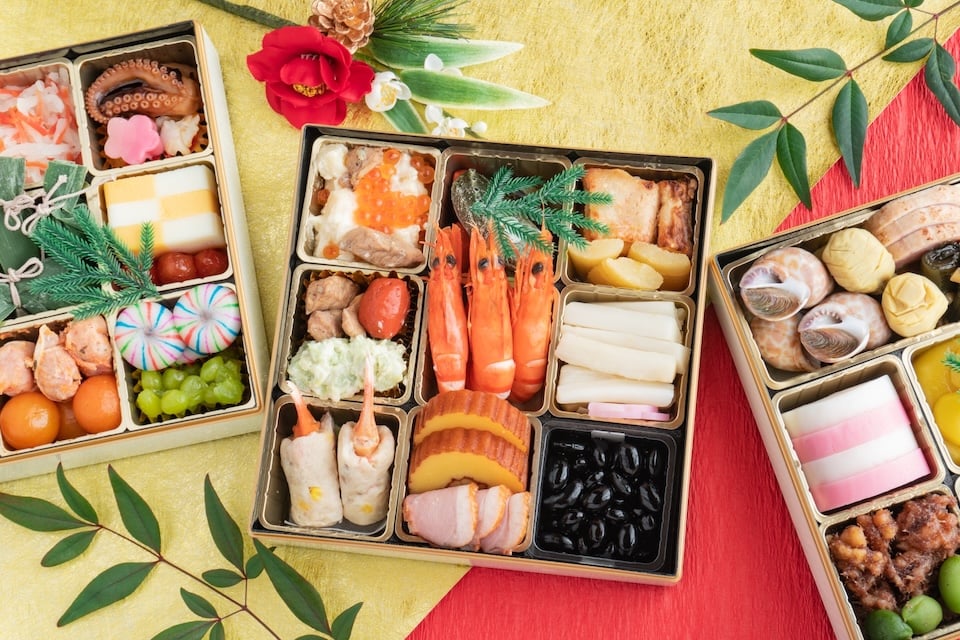
Japanese cuisine follows shun (旬, shun), enjoying foods at their seasonal peak: bamboo shoots and sakura mochi (桜餅, sakuramochi) in spring, eel and watermelon in summer, matsutake mushrooms and chestnuts in autumn, and root vegetables with yuzu in winter.
Seasonality shapes both home cooking and kaiseki (懐石, kaiseki) dining, where dishes and plating reflect nature—glass plates for summer, maple leaves in fall. Presentation follows the idea that “you eat with your eyes first,” with five-color balance and symbolic garnishes like cherry blossoms or plum-shaped carrots.
Festive dishes such as osechi ryōri (お節料理, osechi ryōri) showcase artistry, each item symbolizing blessings in tiered jubako boxes. Even simple sashimi or colorful bento embody this seasonal and aesthetic care. Eating with the seasons also supports health, helping explain Japan’s world-leading longevity.
Tips for Experiencing Japanese Culture Abroad
You don’t have to be in Japan to start experiencing its rich culture. Many opportunities exist abroad for engaging with Japanese customs, food, and traditions.
For foreign travelers who are curious or preparing for a Japan trip – or those who simply have an interest in Japan – here are some practical tips on how to immerse yourself in Japanese culture in your own country.
Cultural Activities and Workshops Overseas
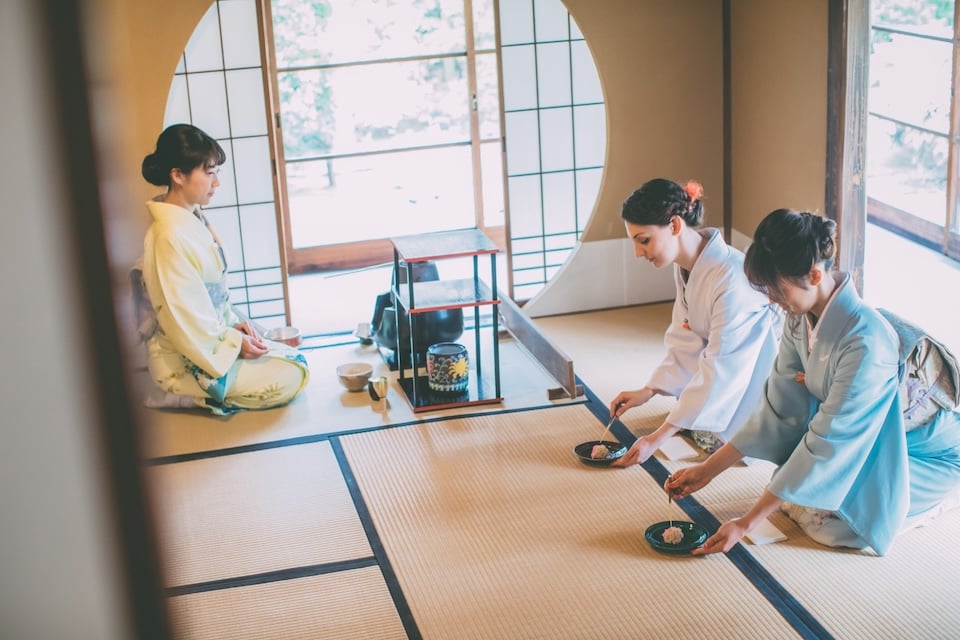
Japanese culture can be experienced abroad through workshops and festivals supported by organizations like The Japan Foundation and local embassies.
- Tea Ceremony (茶の湯, chanoyu / 茶道, sadō): Learn the mindful preparation of matcha guided by kimono-clad instructors.
- Calligraphy (書道, shodō): Practice kanji with brush and ink, focusing on meditative strokes.
- Origami & Ikebana: Create paper cranes or flower arrangements, emphasizing symbolism and simplicity.
- Martial Arts: Dojos (道場, dōjō) abroad teach karate, judo, aikido, and kendo, along with etiquette.
- Cooking Classes: Make sushi rolls, bento, or okonomiyaki while learning cultural context.
- Kimono Dress-Up: Try on traditional attire to appreciate its layering techniques.
- Language & Etiquette Lessons: Short “Japan 101” courses cover bowing, meishi (business card) exchange, and manners.
Japanese festivals (祭り, matsuri) overseas also bring culture alive with Bon Odori, taiko drumming, and Japanese street food—offering a lively, hands-on taste of Japan.
Where to Find Authentic Japanese Food and Clothing
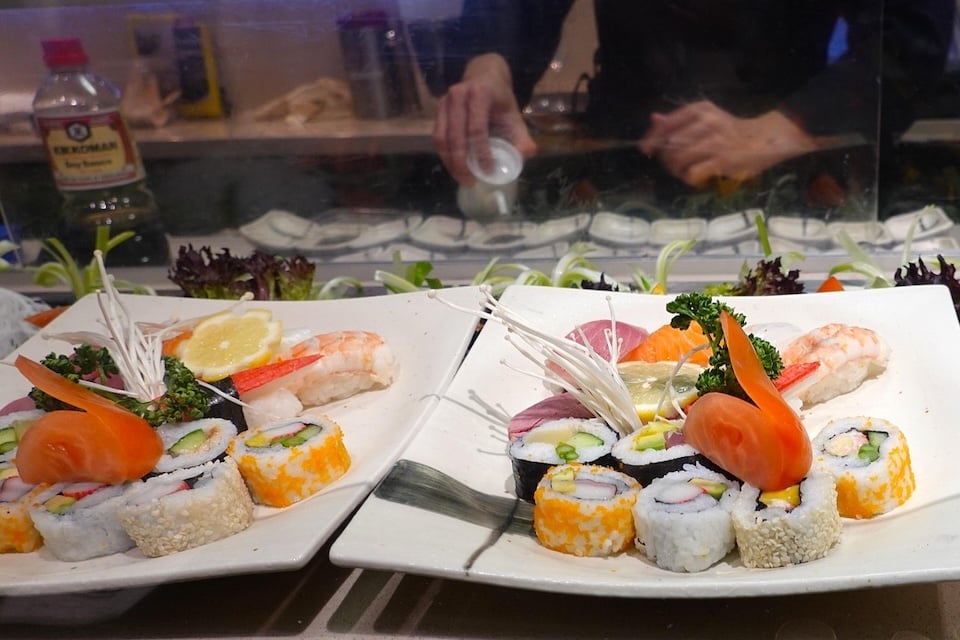
Experiencing culture often starts with food and attire.
- Japanese Restaurants: Look for ramen shops, izakayas, and curry houses frequented by Japanese expats. Practice dining etiquette such as saying itadakimasu (いただきます) before meals.
- Grocery Stores: Japanese and Asian supermarkets sell staples like miso, seaweed, sushi-grade fish, and seasonal treats such as sakura-flavored sweets.
- Tea & Sweets: Visit cafés for matcha, mochi, and dorayaki, or bakeries offering melon pan and castella cake.
- Clothing & Goods: Specialty shops and festival stalls may sell yukata (浴衣, yukata) or happi coats, while brands like Uniqlo bring Japanese fashion worldwide.
- Pop Culture Shops: Explore anime/manga stores, Daiso, or Kinokuniya for Japanese goods.
- Japantowns: Districts like San Francisco’s Japantown, Los Angeles’ Little Tokyo, or São Paulo’s Liberdade offer authentic food, shopping, and cultural immersion.
Learning Japanese Etiquette Before Visiting

Learning Japanese Etiquette Before Visiting
Familiarizing yourself with etiquette ensures smoother interactions.
- Greetings: Bow politely and exchange business cards (名刺, meishi) with two hands.
- Punctuality: Being early by 5–10 minutes shows respect.
- Shoes Off: Remove shoes in homes, inns, and tatami rooms; use provided slippers (including toilet slippers).
- Dining: Don’t stick chopsticks upright in rice, refill others’ drinks first, and eating sushi with hands is acceptable.
- Public Etiquette: Speak quietly, carry trash until bins are found, and follow local customs (e.g., escalator rules differ in Tokyo and Osaka).
- Onsen: Wash before entering, no swimsuits, and check tattoo policies.
- Language: Learn basics like arigatō (ありがとう, thank you), sumimasen (すみません, excuse me), and onegai shimasu (お願いします, please).
Above all, showing respect for others is key. Japanese people are forgiving of mistakes but deeply appreciate genuine effort.
Conclusion: Embracing Japanese Culture with Respect and Authenticity
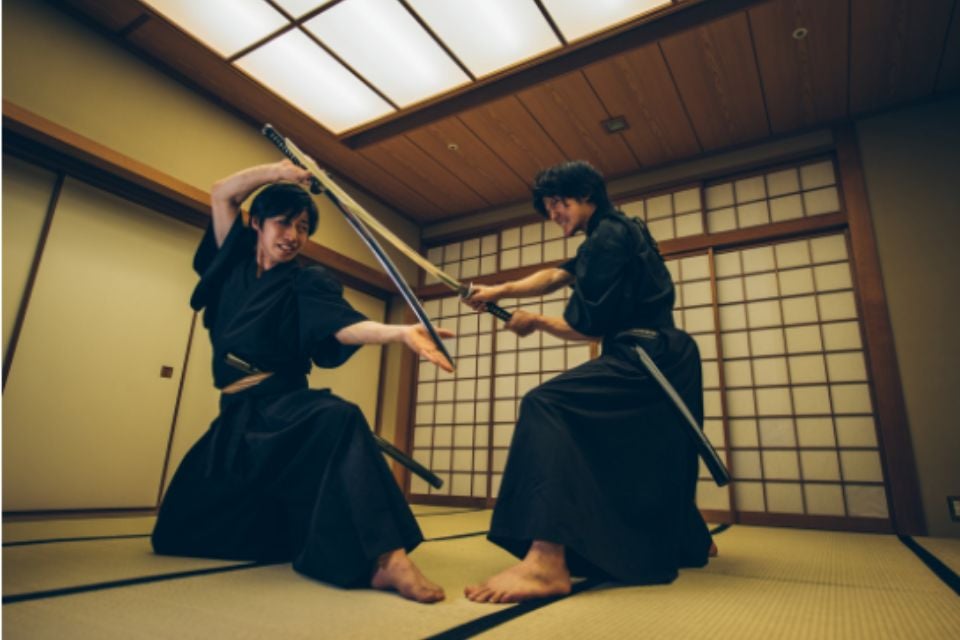
Japanese lifestyle is built on harmony, respect, and tradition, seen in everything from daily etiquette to seasonal food and fashion. Travelers can experience this not only in Japan but also abroad through workshops, festivals, and cultural exchanges.
For deeper immersion, consider organizations like MOTENAS JAPAN, which provide tailored cultural experiences – from tea ceremony arrangements to samurai workshops – embodying the spirit of omotenashi.
By approaching Japanese culture with openness and respect, visitors gain not only unforgettable memories but also meaningful connections.

旅をこよなく愛するWebライター。アジアを中心に16の国にお邪魔しました(今後も更新予定)。
ワーホリを機にニュージーランドに数年滞在。帰国後は日本の魅力にとりつかれ、各地のホテルで勤務。
日本滞在が、より豊かで思い出深いものになるように、旅好きならではの視点で心を込めてお届けします!





